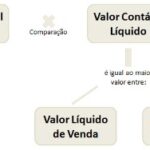Content
Allowance for doubtful accounts is a dollar amount companies deduct from their receivables to account for unpaid invoices or debt. The percentage of sales method simply takes the total sales for the period and multiplies that number by a percentage. Once again, the percentage is an estimate based on the company’s previous ability to collect receivables. For example, a customer takes out a $15,000 car loan on August 1, 2018 and is expected to pay the amount in full before December 1, 2018. For the sake of this example, assume that there was no interest charged to the buyer because of the short-term nature or life of the loan. When the account defaults for nonpayment on December 1, the company would record the following journal entry to recognize bad debt.
- Then, decrease your ADA account by crediting your Allowance for Doubtful Accounts account.
- This asset represents invoices that have been sent to customers but are yet unpaid.
- Instead of giving you the silent treatment, they can for example raise a dispute over an invoice in a few clicks from their dashboard.
- The direct write-off method delays recognition of bad debt until the specific customer accounts receivable is identified.
- The projected bad debt expense is properly matched against the related sale, thereby providing a more accurate view of revenue and expenses for a specific period of time.
- BDE is reported on financial statements using the direct write-off method or the allowance method.
In that case, the allowance for doubtful accounts will be debited, and accounts receivable will be credited. However, the net AR doesn’t get affected, and only the remaining allowance reduces from $15,000 to $5,000. Here the business assesses its past records and chooses an appropriate percentage of AR they expect to go unpaid. It is critical to have an allowance for doubtful accounts as it indicates the bad debt expense a company expects to incur.
Bad Debt Expense Definition and Methods for Estimating
Note that allowance for bad debts reduces the overall accounts receivable account, not a specific accounts receivable assigned to a customer. Because it is an estimation, it means the exact account that is (or will become) uncollectible is not yet known. An allowance for doubtful accounts, or bad debt reserve, is a contra asset account (either has a credit balance or balance of zero) that decreases your accounts receivable. When you create an allowance for doubtful accounts entry, you are estimating that some customers won’t pay you the money they owe. The first alternative for creating a credit memo is called the direct write off method, while the second alternative is called the allowance method for doubtful accounts.
- Some companies choose to look solely at credit sales (since cash sales have a 100% collection rate,) while others look at the percentage of total AR collected.
- Notice they did not post the credit side of the entry to Accounts Receivable because the subsidiary account always, always, always has to agree with the control account.
- Not only does it parse out which invoices are collectible and uncollectible, but it also helps you generate accurate financial statements.
- This post is to be used for informational purposes only and does not constitute legal, business, or tax advice.
- Note that if a company believes it may recover a portion of a balance, it can write off a portion of the account.
Reporting a bad debt expense will increase the total expenses and decrease net income. Therefore, the amount of bad debt expenses a company reports will ultimately change how much taxes they pay during a given fiscal period. Calculating your bad debts is an important part of business accounting principles. Not only does it parse out which invoices are collectible and uncollectible, but it also helps you generate accurate financial statements.
Accounts Receivable Aging Method
In a nutshell, it’s all about being proactive about your accounts receivable. If your business uses credit sales as its main sales method or has to write off debt regularly, it’s best to use the allowance method. You may notice that all three approaches use the same accounts for the adjusting entry; only the approach changes the financial outcome. Also note that it is a requirement that the estimation approach be disclosed in the notes of financial statements so stakeholders can make informed decisions. The first entry reverses the bad debt write-off by increasing Accounts Receivable (debit) and decreasing Bad Debt Expense (credit) for the amount recovered. The second entry records the payment in full with Cash increasing (debit) and Accounts Receivable decreasing (credit) for the amount received of $5000.
- An account that is 90 days overdue is more likely to be unpaid than an account that is 30 days past due.
- In such cases, the business must first debit its AR account and credit its allowance for doubtful accounts.
- This is a more conservative provision strategy and can be helpful in times of unexpected crisis.
You can deduct it on Schedule C (Form 1040), Profit or Loss From Business (Sole Proprietorship) or on your applicable business income tax return. Using the double-entry accounting method, a business records the amount of money the customers owe it in an Account Receivable Account. By doing this, you remove both the credit memo as well as the invoice from the accounts receivable statement report. Again, this “income statement method” is the easiest to apply, but not the most accurate.
Accounts receivable aging
Another way to know how much to plan for your bad debt reserve is to use the aging method. Because uncollectible accounts threaten your cash flow, it is important to keep an eye on them. The allowance for doubtful debts accounts shows the loans current balance that the bank expects to default, so there is adjustment done to the balance sheet to reflect that particular balance. I would buy them from you based on the net realizable value—the cash I would expect to ultimately collect. It’s a stand-alone account usually classified as a selling expense (which you will see in the module on Merchandising Operations). However, Allowance for Doubtful Accounts is attached to Accounts Receivable.

Otherwise, it could be misleading to investors who might falsely assume the entire A/R balance recorded will eventually be received in cash (i.e. bad debt expense acts as a “cushion” for losses). Some of the people it owes money to will not be made whole, meaning those people must recognize a loss. This situation represents bad debt expense on the side that is not going to collect the funds they are owed. The first step in accounting for the allowance for doubtful accounts is to establish the allowance.
Module 6: Receivables and Revenue
Your allowance for doubtful accounts estimation for the two aging periods would be $550 ($300 + $250). QuickBooks has a suite of customizable solutions to help your business streamline accounting. From insightful reporting to budgeting help and automated invoice processing, QuickBooks can help you get back to the daily tasks you love doing for your small business. When you sell a service or product, you expect your customers to fulfill their payment, even if it is a little past the invoice deadline. Because you can’t know in advance the amount of bad debt you’ll incur, learn how to make an allowance for potential debts.
- In accrual-basis accounting, recording the allowance for doubtful accounts at the same time as the sale improves the accuracy of financial reports.
- It’s best used if a few bad debts occur in your business, as manually processing those can take some time.
- The allowance method is more complex on paper but paints a more accurate picture of your ability to collect invoices.
- Upflow allows you to automate your receivable process to get paid more easily and faster.
When recording bad debt expense on the income statement, however, you’ll just record the adjustment value. This method is straightforward but might lead to confusing accounting entries. It can misstate income if your bad debt expense journal entry occurs in a different period from the sales entry. For Doubtful Accounts And Bad Debt Expenses that reason, the direct write-off method works best when recording immaterial debts or if you only have a few uncollected invoices. The estimated percentages are then multiplied by the total amount of receivables in that date range and added together to determine the amount of bad debt expense.
Accounting Business and Society
The balance sheet method (also known as the percentage of accounts receivable method) estimates bad debt expenses based on the balance in accounts receivable. The method looks at the balance of accounts receivable at the end of the period and assumes that a certain amount will not be collected. https://kelleysbookkeeping.com/ Accounts receivable is reported on the balance sheet; thus, it is called the balance sheet method. The balance sheet method is another simple method for calculating bad debt, but it too does not consider how long a debt has been outstanding and the role that plays in debt recovery.

We accept payments via credit card, wire transfer, Western Union, and (when available) bank loan. Some candidates may qualify for scholarships or financial aid, which will be credited against the Program Fee once eligibility is determined. Please refer to the Payment & Financial Aid page for further information. Automating these tasks frees your AR team to focus on executing more strategic, value-added work. Team members can focus their attention on uncovering the causes of payment delays and working with customers to better understand their needs.
Heating and Air Company
You will deduct AFDA from the overall AR balance when calculating the total asset value of AR on your balance sheet. In accordance with GAAP revenue recognition policies, the company must still record credit sales (i.e. not cash) as revenue on the income statement and accounts receivable on the balance sheet. Alternatively, a bad debt expense can be estimated by taking a percentage of net sales, based on the company’s historical experience with bad debt. Companies regularly make changes to the allowance for credit losses entry, so that they correspond with the current statistical modeling allowances. The matching principle requires that expenses be matched to related revenues in the same accounting period in which the revenue transaction occurs.

For many business owners, it can be difficult to estimate your bad debt reserve. Note that the accounts receivable (A/R) account is NOT credited, but rather the allowance account for doubtful accounts, which indirectly reduces A/R. In effect, the allowance for doubtful accounts leads to the A/R balance recorded on the balance sheet to reflect a value closer to reality.
